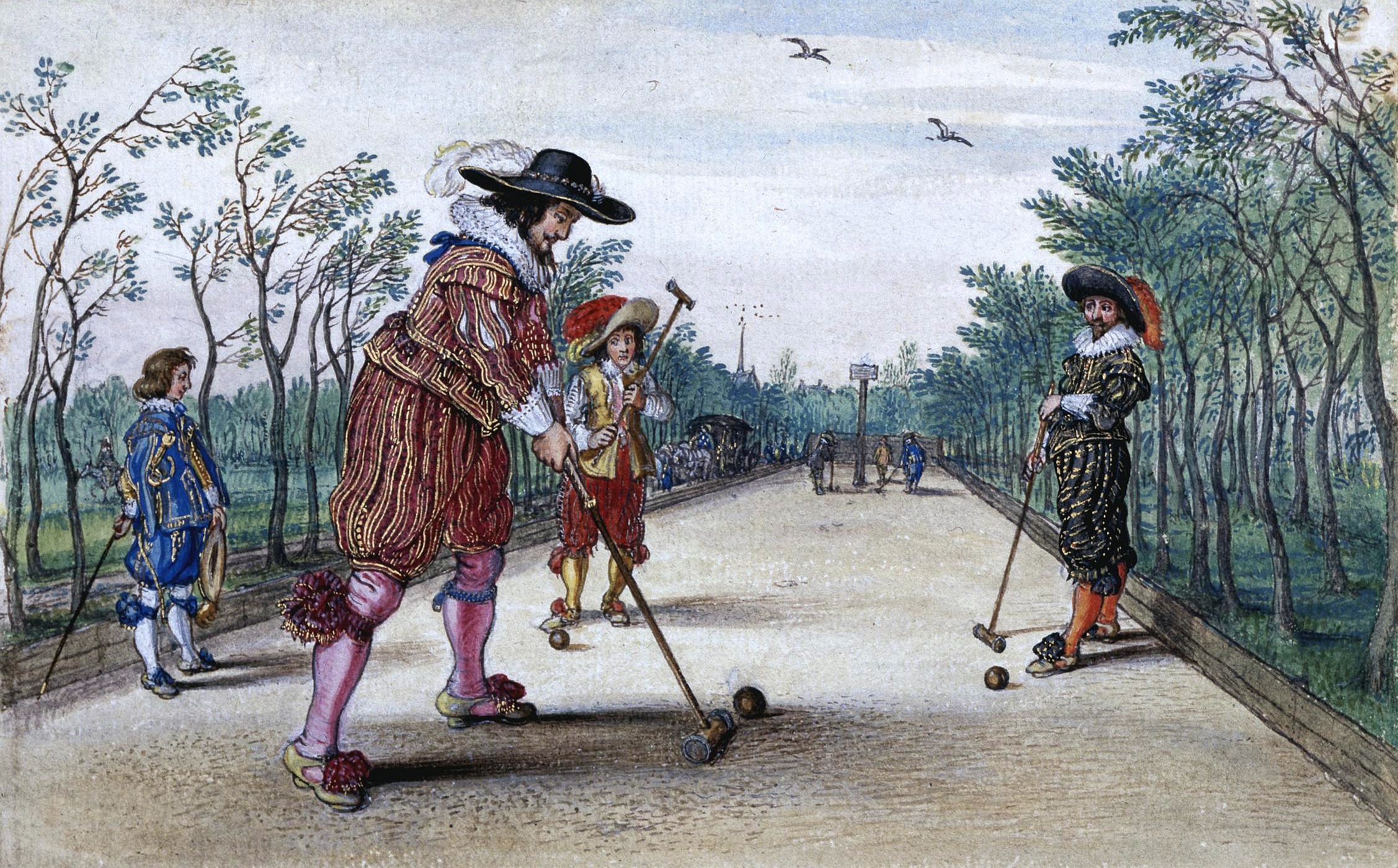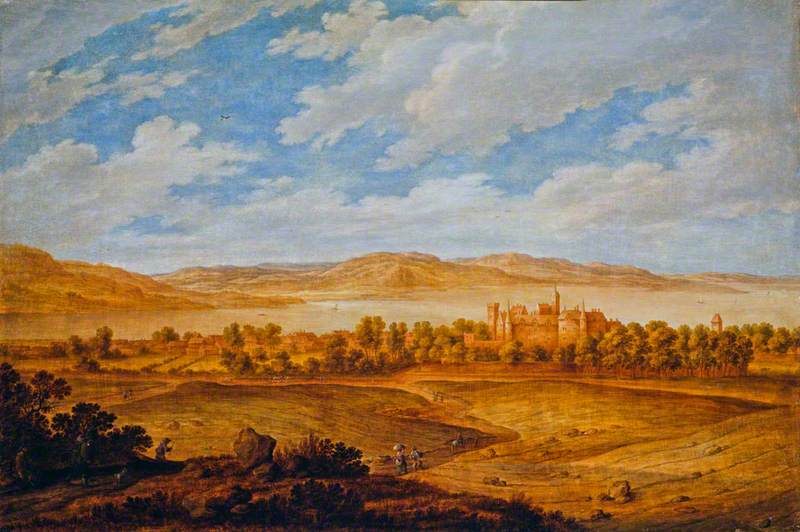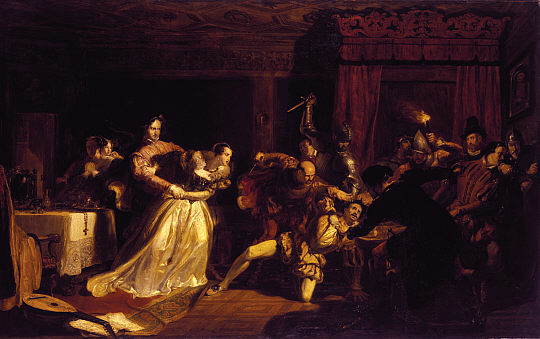|
Pall-mall
Pall-mall, paille-maille, palle-maille, pell-mell, or palle-malle (, , ) is a lawn game (though primarily played on earth surfaces rather than grass) that was mostly played in the 16th and 17th centuries. It is considered a precursor to croquet. History Related to Italian (also known as lawn billiards or trucks in English) and similar games, pall-mall is an early modern development from , a French form of ground billiards. The name comes from the Italian , which literally means 'ball mallet', ultimately derived from Latin , meaning 'ball', and meaning ' maul, hammer, or mallet'. An alternative etymology has been suggested, from Middle French or 'straw-mallet', in reference to target hoops being made of bound straw. History in Britain It appears that pall mall was introduced from France into Scotland and later to England. The 19th-century historian Henry B. Wheatley states that "pall mall was a popular game in the sixteenth and seventeenth centuries and few large towns w ... [...More Info...] [...Related Items...] OR: [Wikipedia] [Google] [Baidu] |
Croquet
Croquet ( or ) is a sport which involves hitting wooden, plastic, or composite balls with a mallet through hoops (often called Wicket, "wickets" in the United States) embedded in a grass playing court. Variations In all forms of croquet, individual players or teams take turns striking the balls, scoring points by knocking them through a hoop. The game ends when a player or team reaches a predetermined number of points. Several variations exist that differ in when and how a stroke may be legally played, when points are scored, the layout of the lawn, and the target score. Commonly, social games adopt further non-standard variations to adapt play to the conditions. In all versions, players of all ages and genders compete on equal terms and are ranked together. Two versions of the game are directly governed by the World Croquet Federation, which organises individual and team World Championships. Other regional variants which developed in parallel remain common in parts of the w ... [...More Info...] [...Related Items...] OR: [Wikipedia] [Google] [Baidu] |
Seton Palace
Seton Palace was situated in East Lothian, a few miles south-east of Edinburgh near the town of Prestonpans. Often regarded as the most desirable Scottish residence of the sixteenth and seventeenth centuries, the palace was erected in the 15th century by George, 4th Lord Seton. The palace belonged to the Lords Seton by the 1500s and was a popular retreat for Mary, Queen of Scots. She had spent her honeymoon with Lord Darnley there in July 1565. Mary played golf at Seton, and it was said she played "pall-mall and golf" as usual in the fields at Seton after Darnley's murder, "Pall-mall" was an early form of croquet. A marriage contract of Mary and Earl of Bothwell, made at Seton on 5 April 1567, and exhibited by Mary's enemies at the Hampton Court conference on 15 December 1568, was probably a contemporary forgery and the actual contract was made in Edinburgh on 14 May. In the 17th-century, the completed palace was triangular in plan, with three wings around a courtyard. In 163 ... [...More Info...] [...Related Items...] OR: [Wikipedia] [Google] [Baidu] |
Henry Frederick, Prince Of Wales
Henry Frederick, Prince of Wales, (19 February 1594 – 6 November 1612), was the eldest son and heir apparent of King James VI and I and Anne of Denmark, Queen Anne. His name derives from his grandfathers: Henry Stuart, Lord Darnley; and Frederick II of Denmark. Prince Henry was widely seen as a bright and promising heir to the Throne of England, English, Monarchy of Ireland, Irish, and Scottish thrones. However, at the age of 18, he predeceased his father, dying of typhoid fever. His younger brother, the future Charles I of England, Charles I, succeeded him as heir apparent to the thrones. Early life Henry was born on 19 February 1594 at Stirling Castle, Scotland, and automatically received the titles Duke of Rothesay, Earl of Carrick, Baron of Renfrew (title), Baron of Renfrew, Lord of the Isles, and Prince and Great Steward of Scotland at birth. His nurses included Margaret Masterton, Mistress Primrose and Mistress Bruce. His baptism, held on 30 August 1594, was celebrat ... [...More Info...] [...Related Items...] OR: [Wikipedia] [Google] [Baidu] |
Ground Billiards
Ground billiards is a modern term for a family of medieval European lawn games, the original names of which are mostly unknown, played with a long-handled mallet (the '), wooden balls, a hoop (the ''pass''), and an upright skittle or pin (the ''king''). The game, which cue-sports historians have called "the original game of billiards", developed into a variety of modern outdoor and indoor games and sports such as croquet, pool, snooker, and carom billiards. Its relationship to games played on larger fields, such as hockey, golf, and bat-and-ball games, is more speculative. As a broader classification, the term is sometimes applied to games dating back to classical antiquity that are attested via difficult-to-interpret ancient artworks and rare surviving gaming artifacts. History Dating back to at least the 15th century as a tabletop game, and in recognizable form to as early as the 14th, this proto-billiards game appears to have been ancestral to croquet (19th century), truc ... [...More Info...] [...Related Items...] OR: [Wikipedia] [Google] [Baidu] |
Trucco
Trucco (also called trucks, troco,''Oxford English Dictionary''; see "troco" and "trucks" entries. or lawn billiards) is an Italian and later English lawn game, a form of ground billiards played with heavy balls, large-headed cues sometimes called ''tacks'', a ring (also called the ''argolis'' or ''port''), and sometimes an upright pin (the ''sprigg'' or ''king''). The game was popular from at least the 17th century to the early 20th century, and was a forerunner of croquet, surviving for a few generations after the introduction of the latter. History The oldest name in English seems to be ''trucks'' or ''truck'' from the Italian and Spanish , meaning ''. The game appears to be derived from and its offshoot pall-mall (the latter having been especially popular in England in the 16th and 17th centuries, as well as in western continental Europe); both were earlier ground billiards games, using mallets and often featuring a hoop target (then usually made of straw). Trucco was ... [...More Info...] [...Related Items...] OR: [Wikipedia] [Google] [Baidu] |
Antoine Lefèvre De La Boderie
Antoine Lefèvre de la Boderie (1555-1615) was a French diplomat and ambassador to England. He was a son of Jacques Lefèvre de la Boderie and Anne de Montbray. Career Lefèvre de la Boderie was a master of household to Henry IV of France. In January 1598 he welcomed Sir Robert Cecil as ambassador to France at Dieppe. He was French ambassador to Rome, and ambassador in England from April 1606 until 1611. His correspondence was published in 1750 as the ''Ambassades de Monsieur de la Boderie en Angleterre'' in 5 volumes. Boderie is known for his commentary on politics in London during the reign of James VI and I. Boderie was particularly surprised by the hunting activity of King James, who regularly absented himself from the apparent centres of power to country residences. In 1606, Boderie noted that Prince Henry played golf, which he described as a Scottish game not unlike "pallemail" or pall-mall. Boderie also mentioned exercises with the pike and archery. Prince Henry's ridi ... [...More Info...] [...Related Items...] OR: [Wikipedia] [Google] [Baidu] |
Jeu De Mail
or ('pallamaglio' in Italian, Middle French for 'mallet game', or sometimes interpreted as 'straw game') is an ancient outdoor game, originally from Naples, which gave rise to numerous modern sports, such as golf, croquet, hockey and its variations, and polo. It is a now-obsolete lawn game originating in the Late Middle Ages and mostly played in the Kingdom of Naples and France, surviving in some locales into the 20th century. It is a form of ground billiards, using one or more balls, a stick with a mallet-like head, and usually featuring one or more targets such as hoops or holes. ' was ancestral to the games golf, palle-malle and croquet, and (by moving it indoors and playing on a table with smaller equipment), Cue sports, billiards. History One of the oldest references to the game of 'pallamaglio', and to its Neapolitan origin, is by Antonio Francesco Grazzini, Anton Francesco Grazzini, also known as Lasca. The game is also mentioned in a list of Neapolitan popular games in Gi ... [...More Info...] [...Related Items...] OR: [Wikipedia] [Google] [Baidu] |
East Lothian
East Lothian (; ; ) is one of the 32 council areas of Scotland, as well as a Counties of Scotland, historic county, registration county and Lieutenancy areas of Scotland, lieutenancy area. The county was called Haddingtonshire until 1921. In 1975, the historic county was incorporated for local government in Scotland, local government purposes into Lothian Regional Council, Lothian Region as East Lothian District, with some slight alterations of its boundaries. The Local Government etc. (Scotland) Act 1994 later created East Lothian as one of 32 modern council areas. East Lothian lies south of the Firth of Forth in the eastern central Lowlands of Scotland. It borders Edinburgh to the west, Midlothian to the south-west and the Scottish Borders to the south. Its administrative centre and former county town is Haddington, East Lothian, Haddington while the largest town is Musselburgh. Haddingtonshire has ancient origins and is named in a charter of 1139 as ''Hadintunschira'' and ... [...More Info...] [...Related Items...] OR: [Wikipedia] [Google] [Baidu] |
David Rizzio
David Rizzio ( ; ; – 9 March 1566) or Riccio ( , ) was an Italian courtier, born in Pancalieri close to Turin, a descendant of an ancient and noble family still living in Piedmont, the Riccio Counts di San Paolo e Solbrito, who rose to become the private secretary of Mary, Queen of Scots. Mary's husband, Henry Stuart, Lord Darnley, Lord Darnley, is said to have been jealous of their friendship because of rumours that Rizzio had impregnated Mary, and he joined in a conspiracy of Protestant nobles to murder him, led by Patrick Ruthven, 3rd Lord Ruthven. Mary was having dinner with Rizzio and a few ladies-in-waiting when Darnley joined them, accused his wife of adultery and then had a group murder Rizzio, who was hiding behind Mary. Mary was held at gunpoint and Rizzio was stabbed numerous times. His body took 57 dagger wounds. The murder was the catalyst of the downfall of Darnley, and had serious consequences for Mary's subsequent reign. Career Rizzio (whose name appears in ... [...More Info...] [...Related Items...] OR: [Wikipedia] [Google] [Baidu] |
James VI Of Scotland
James VI and I (James Charles Stuart; 19 June 1566 – 27 March 1625) was King of Scotland as James VI from 24 July 1567 and King of England and Ireland as James I from the union of the Scottish and English crowns on 24 March 1603 until his death in 1625. Although he long tried to get both countries to adopt a closer political union, the kingdoms of Scotland and England remained sovereign states, with their own parliaments, judiciaries, and laws, ruled by James in personal union. James was the son of Mary, Queen of Scots, and a great-great-grandson of Henry VII, King of England and Lord of Ireland, and thus a potential successor to all three thrones. He acceded to the Scottish throne at the age of thirteen months, after his mother was forced to abdicate in his favour. Although his mother was a Catholic, James was brought up as a Protestant. Four regents governed during his minority, which ended officially in 1578, though he did not gain full control of his government ... [...More Info...] [...Related Items...] OR: [Wikipedia] [Google] [Baidu] |
Basilikon Doron
The ''Basilikon Doron'' is a treatise on government written by King James VI of Scotland (who would later also become James I of England), in 1599. Background ''Basilikon Doron'' (Βασιλικὸν Δῶρον) means "royal gift" in Ancient Greek and was written in the form of a private letter to James's eldest son, Henry, Duke of Rothesay (1594–1612). After Henry's death, James gave it to his second son, Charles, born 1600, later King Charles I. Seven copies were printed in Edinburgh in 1599, and it was republished in London in 1603, when it sold in the thousands. Content This document is separated into three books, serving as general guidelines to follow to be an efficient monarch. The first describes a king's duty towards God as a Christian. The second focuses on the roles and responsibilities in office. The third concerns proper behaviour in daily life. As the first part is concerned with being a good Christian, James instructed his son to love and respect God as wel ... [...More Info...] [...Related Items...] OR: [Wikipedia] [Google] [Baidu] |
A Game Of Pell-Mell
A, or a, is the first letter and the first vowel letter of the Latin alphabet, used in the modern English alphabet, and others worldwide. Its name in English is '' a'' (pronounced ), plural ''aes''. It is similar in shape to the Ancient Greek letter alpha, from which it derives. The uppercase version consists of the two slanting sides of a triangle, crossed in the middle by a horizontal bar. The lowercase version is often written in one of two forms: the double-storey and single-storey . The latter is commonly used in handwriting and fonts based on it, especially fonts intended to be read by children, and is also found in italic type. In English, '' a'' is the indefinite article, with the alternative form ''an''. Name In English, the name of the letter is the ''long A'' sound, pronounced . Its name in most other languages matches the letter's pronunciation in open syllables. History The earliest known ancestor of A is ''aleph''—the first letter of the Phoenician ... [...More Info...] [...Related Items...] OR: [Wikipedia] [Google] [Baidu] |








